Window boxes are a charming way to add a splash of color and visual interest to your home’s exterior. Homeowners have used these decorative planters for centuries to dress up plain windows and enhance curb appeal. With a bit of effort and minimal expense, you can install a window box in just an hour or two.
In this guide, This Old House general contractor Tom Silva shares the best way to install a prefabricated window box. According to Silva, successful installation depends on properly placing the box and braces on your house and then securely attaching those components using appropriate fasteners.
And if your green thumb is a bit out of shape, This Old House landscape contractor Roger Cook gives his top tips for maintaining window boxes. So take the afternoon off, roll up your sleeves and hang a window box or two.
Parts of a Window Box
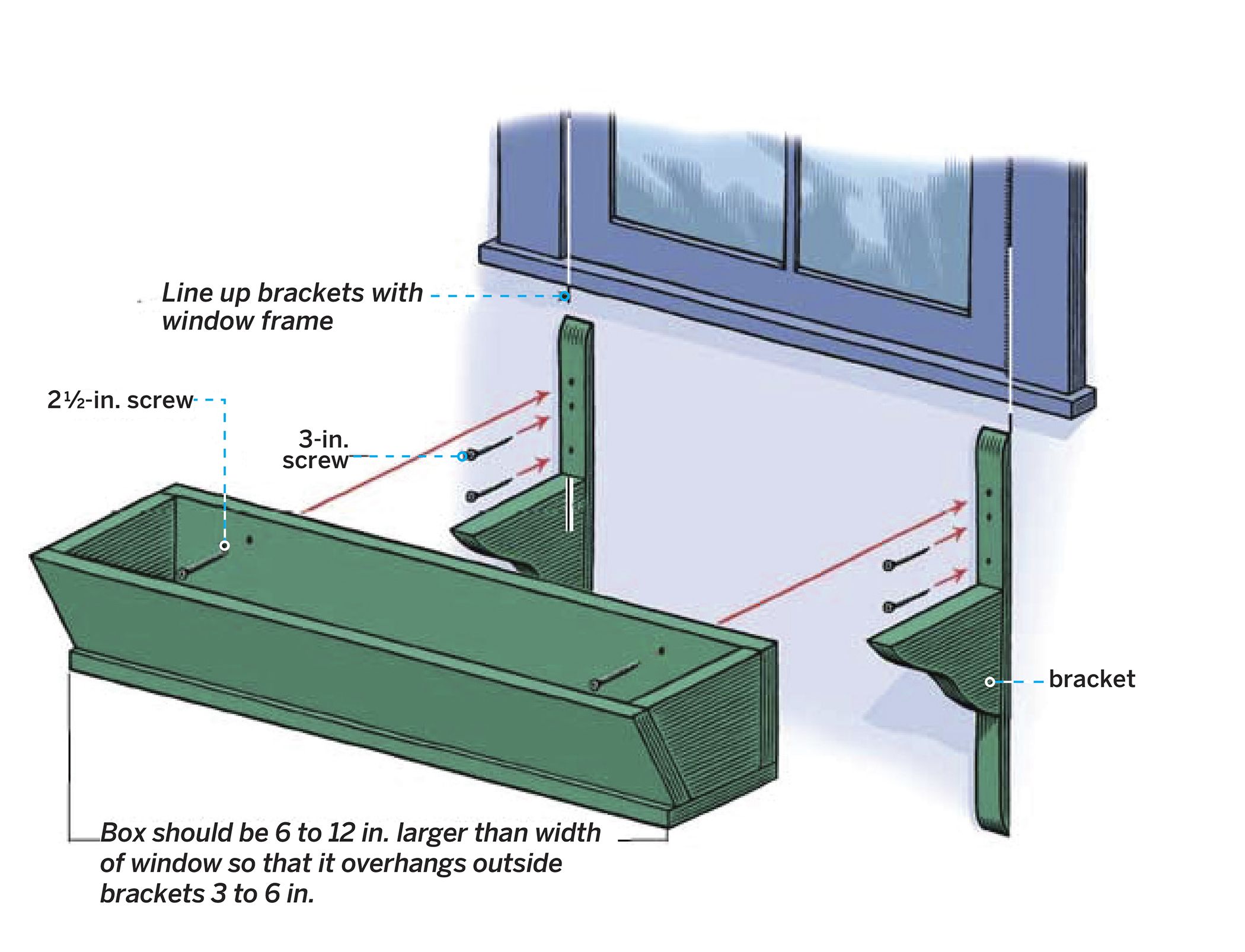
A typical window box consists of the box itself, mounting brackets, and appropriate fasteners. The box is usually made of wood, plastic, or a composite material, while the brackets are typically metal.
Wooden boxes offer a traditional look but may require more maintenance. Plastic and composite boxes are lighter and more weather-resistant but might not have the same aesthetic appeal. Choose brackets that complement your box and home exterior.
Step 1: Mark the Window Box Mounting Location
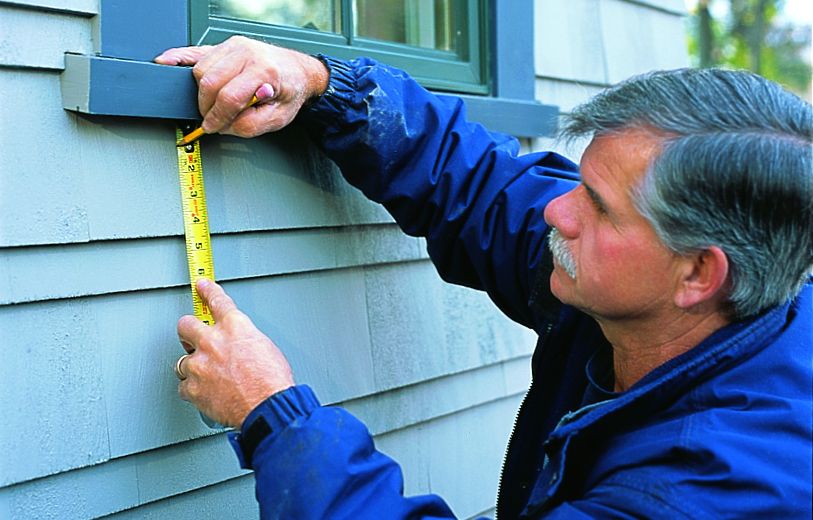
Proper installation keeps the box securely attached to your home’s exterior and helps it support the weight of soil and plants.
The first step in hanging a window box is determining the mounting location. When you’re picking the perfect spot, consider its exposure to sunlight and accessibility for watering and maintaining the plants.
Once you’ve chosen the mounting spot, here’s how to mark it:
- For double-hung or sliding windows, measure down 1 inch from the underside of the windowsill directly below one side of the window frame.
- Make a pencil mark at this point to indicate the top of the bracket.
- For out-swinging windows, measure down 6 to 8 inches instead to allow for proper clearance.
- Repeat this process on the other side of the window.
Make sure your marks are level and symmetrical. Use a level to double-check your measurements before moving on.
Step 2: Install the Top Screw on the Box Bracket
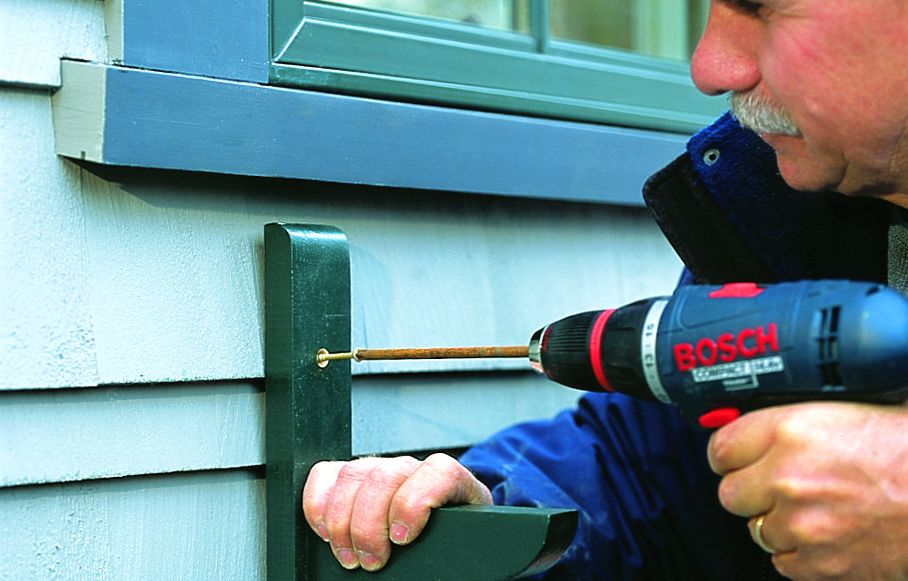
Once you’ve marked the mounting location, it’s time to install the first bracket. This part is the foundation and main support for your window box.
Follow Silva’s steps to installing the bracket:
- Hold the first bracket with its top aligned with the pencil mark you made.
- Mark the bracket for the top screw hole. It should fall near the bottom of the first course of siding below the window.
- Using a countersink bit on a drill, bore a pilot hole and counterbore into the bracket on the mark.
- Fasten the bracket to the house with a 3-inch-long galvanized decking screw through the pilot hole.
If you’re mounting to vinyl, aluminum, or fiber cement siding, be sure to bore a pilot hole through the siding as well. The screw will then bite into the sheathing behind it, providing a secure hold. Double-check the alignment and adjust if necessary to maintain consistency with your initial marks.
Step 3: Check for Plumb and Install the Second Screw
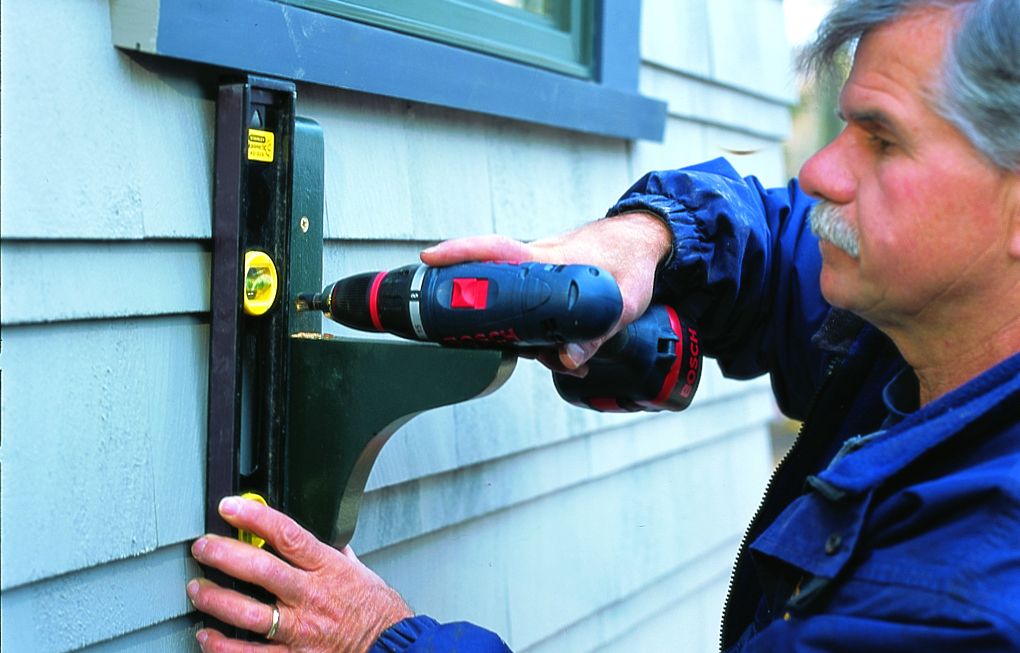
After installing the top screw, you’ll want to make sure the bracket is perfectly plumb before securing it with the second screw. This step guarantees your window box will hang straight and look professional. Here’s how to proceed:
- Hold a 2-foot level against the side of the bracket to check that it’s perfectly plumb.
- If necessary, adjust the bracket slightly until it’s plumb.
- Bore a pilot hole and counterbore for the second screw through the bracket just above the horizontal leg.
- Drive another 3-inch screw through the bracket and into the house.
Once it’s installed, the window box will hide this second screw, providing a clean and finished look.
Step 4: Install the Second Window Box Bracket
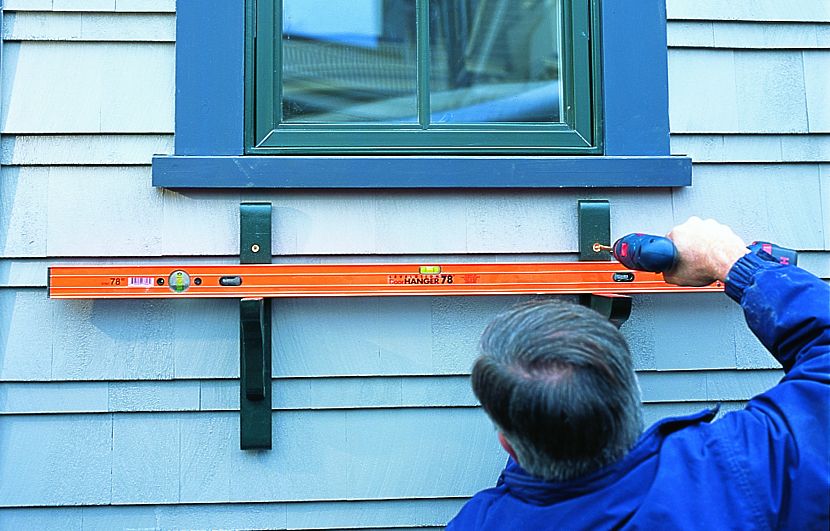
With the first bracket securely in place, it’s time to install the second:
- Hold the second bracket in position under the windowsill, aligning it with the opposite side of the window frame.
- Lay a 4-foot level across the two brackets.
- Adjust the second bracket up or down until both brackets are level.
- Drill a pilot hole and counterbore into the bracket near the bottom of the siding, as you did for the first bracket.
- Attach the bracket to the house with a 3-inch decking screw.
- Check for plumb and drive the second screw as you did with the first bracket.
Don’t rush this step; Take your time to make precise adjustments. If the brackets aren’t perfectly level, the window box won’t hold up as well over time.
Step 5: Center the Window Box
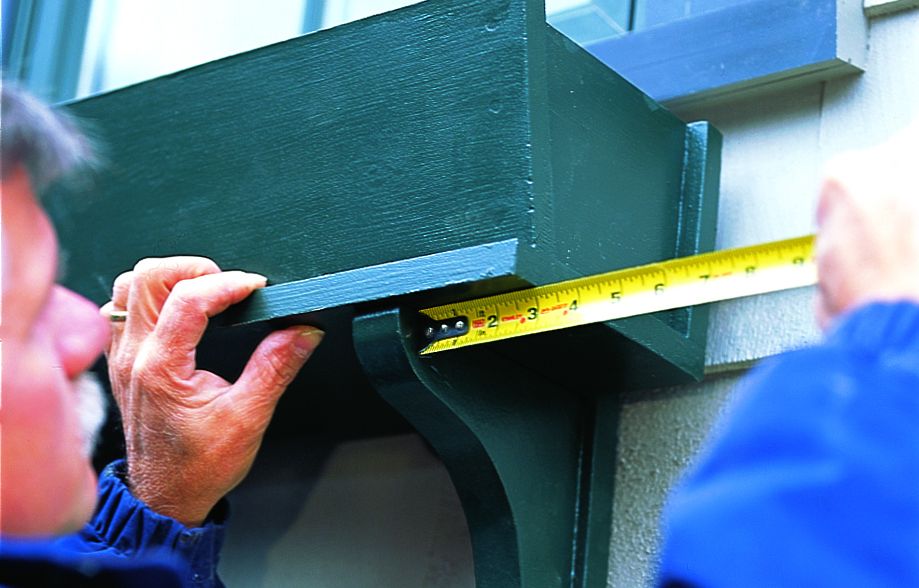
With both brackets securely fastened to the house, you’re ready to position the window box. Follow these steps to center it:
- Set the empty window box on top of the two brackets. Make sure the angled side of the box faces outward.
- Center the box by measuring the overhang on each bracket. Adjust the box until the overhang is equal on both sides.
- Double-check that the box is level and sits flush against the house.
Remember that a filled window box can be surprisingly heavy. We suggest adding your soil and plants after you’ve securely installed the box to make handling easier and safer. You can use a lightweight potting mix to reduce the overall weight and add a layer of gravel at the bottom for improved drainage.
Step 6: Fasten the Window Box to the Brackets
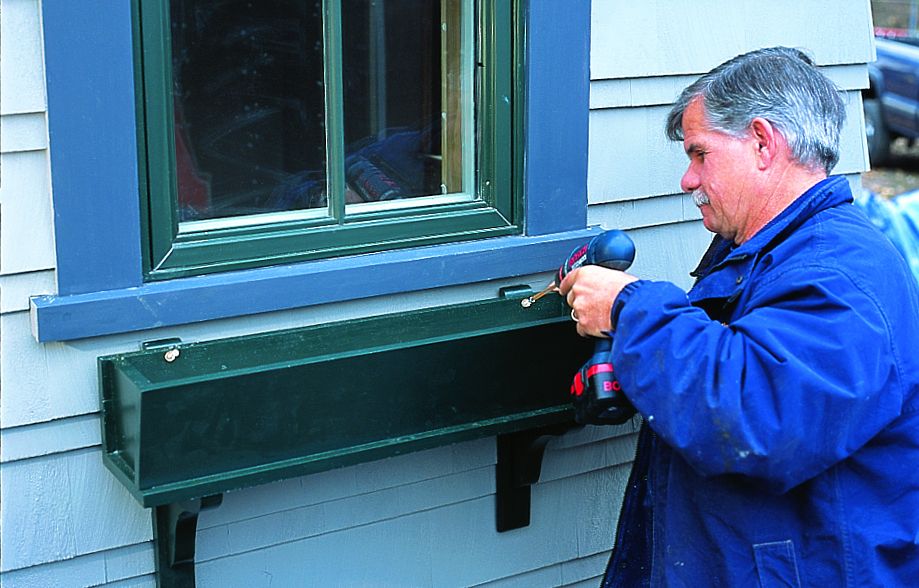
The final step in hanging your window box is to fasten it to the brackets securely. This sets the box in place and helps it support the weight of soil, plants, and water. Follow these steps:
- Drill and counterbore pilot holes into the upper rear edge of the box, directly in front of each bracket.
- Drive a 2 1/2-inch-long galvanized decking screw through the box and into the upper end of each bracket.
- Check that the box is fastened securely and doesn’t wobble or shift.
Now, you can fill your window box with container soil or potting mix and start planting.
Maintaining Your Window Box
For the longevity of both the box and the plants, here are some tips for maintaining your window box:
- Water frequently, especially during hot or dry periods. Window boxes tend to dry out faster than in-ground plantings.
- Fertilize regularly to keep plants healthy and blooming.
- Deadhead flowers to encourage continuous blooming.
- Replace seasonal plants as needed to keep your window box looking fresh year-round.
- Check the box and brackets periodically for any signs of wear or damage, and repair them as necessary.
Besides these tips, rotating your plant selections based on the season will keep your window box vibrant and full of life throughout the year. Also, monitor for pests and treat them quickly to prevent damage to your plants.
Recommended Tools:
 Cordless drill/driver
Cordless drill/driver 4-foot level
4-foot level 2-foot level
2-foot level Tape measure
Tape measure Combination countersink drill bit
Combination countersink drill bit






